Nirbija introduces Satyodaya’s photographs from one of his most recent journeys
Satyodaya is a mountaineer, globetrotter, photographer, media designer, and one of my oldest sannyasin friends. He often sends me photographs from his mountaineering trips in the German and Austrian Alps, from picturesque spots in Italy, or from as far as Asia. Each time I suggest he writes a story about his travels, he always declines the idea with a laconic: “I only take pictures.”
A few months ago, after returning from Sumatra, he showed me an extraordinary portfolio. Again I begged him: “Now you have to share these pictures!” He eventually agreed on condition that I would do the writing and all he had to do was provide the photographs and talk to me a little about the journey.
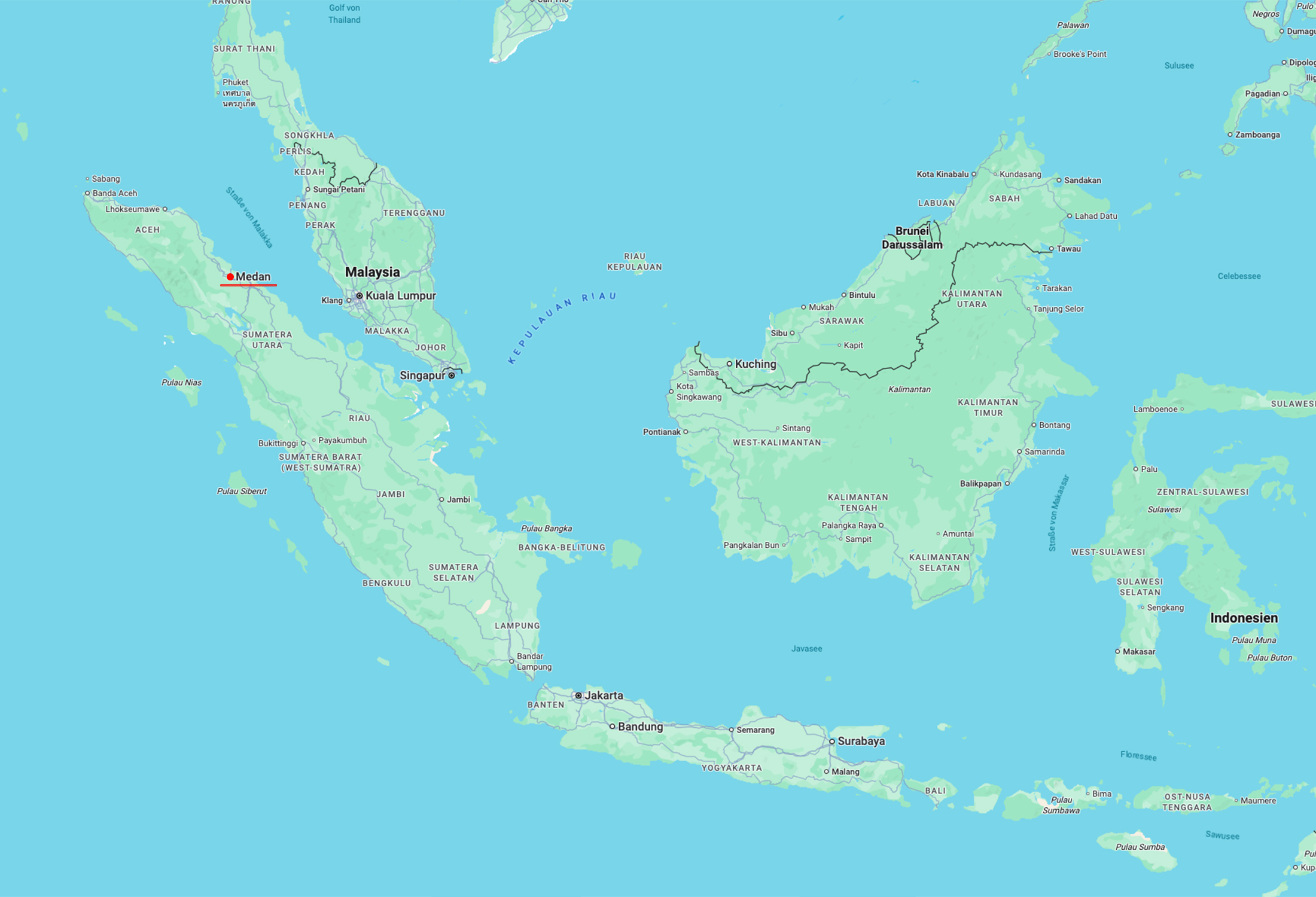
So, in December 2024, he had booked a flight from Frankfurt, which arrived in Kuala Lumpur, Malaysia, via Dubai, after roughly 12 hours. From Kuala Lumpur he landed an hour later, just across the Strait of Malacca, in Medan, the capital of northern Sumatra.
Sumatra is not just one of the largest islands in Indonesia’s Ring of Fire. It’s also a major rainforest hotspot, home to the rare orangutan, reason why there is a jungle trek in Satyodaya’s plans.
Medan, with its 2.5 million inhabitants, sits on the Strait of Malacca – historically one of the most important shipping lanes from Africa and India to the Far East and China. Even Atisha sailed through these waters on his adventurous journey.
We sannyasins are well acquainted with Atisha. I am reading that around a thousand years ago, this Indian Buddhist monk, Atisha Dipamkara, who later became an influential teacher in Tibet’s monasteries, had journeyed to Sumatra. His likely destination was a Buddhist monastery complex, Muaro Jambi, which was rediscovered in the 1970s in the heart of the rainforest. There he met his “most precious teacher Dharmakirti,” who taught him compassion.
I had previously also read Akanksha Damini Joshi’s brilliant account of Atisha’s travels in Osho News. And of course Osho himself dedicated a major discourse series to Atisha’s Seven Points of Mind Training (in The Book of Wisdom, Ch 1, 1977).
Day one
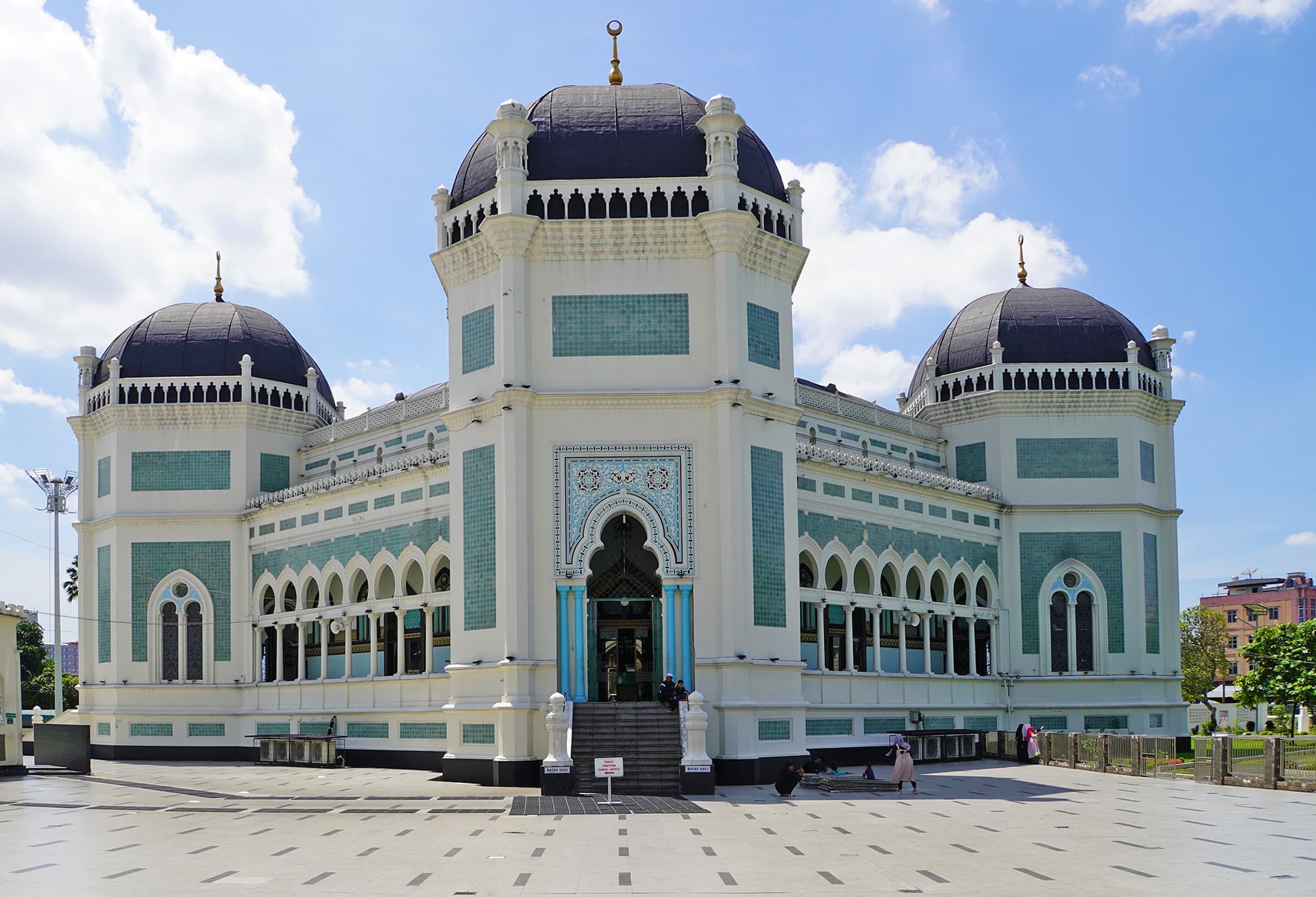
Medan is known for its octagonal, 20th-century Great Mosque, the Masjid Raya Al Mashun. In the first millennium, Sumatra was ruled by Indian kings from the region of modern Bangladesh. The multi-ethnic population was predominantly Hindu until the arrival of Islamic conquerors and traders around the 11th century. The story goes that those unwilling to convert and had the means to travel fled by sea to the southern island of Bali, which remains Hindu to this day.
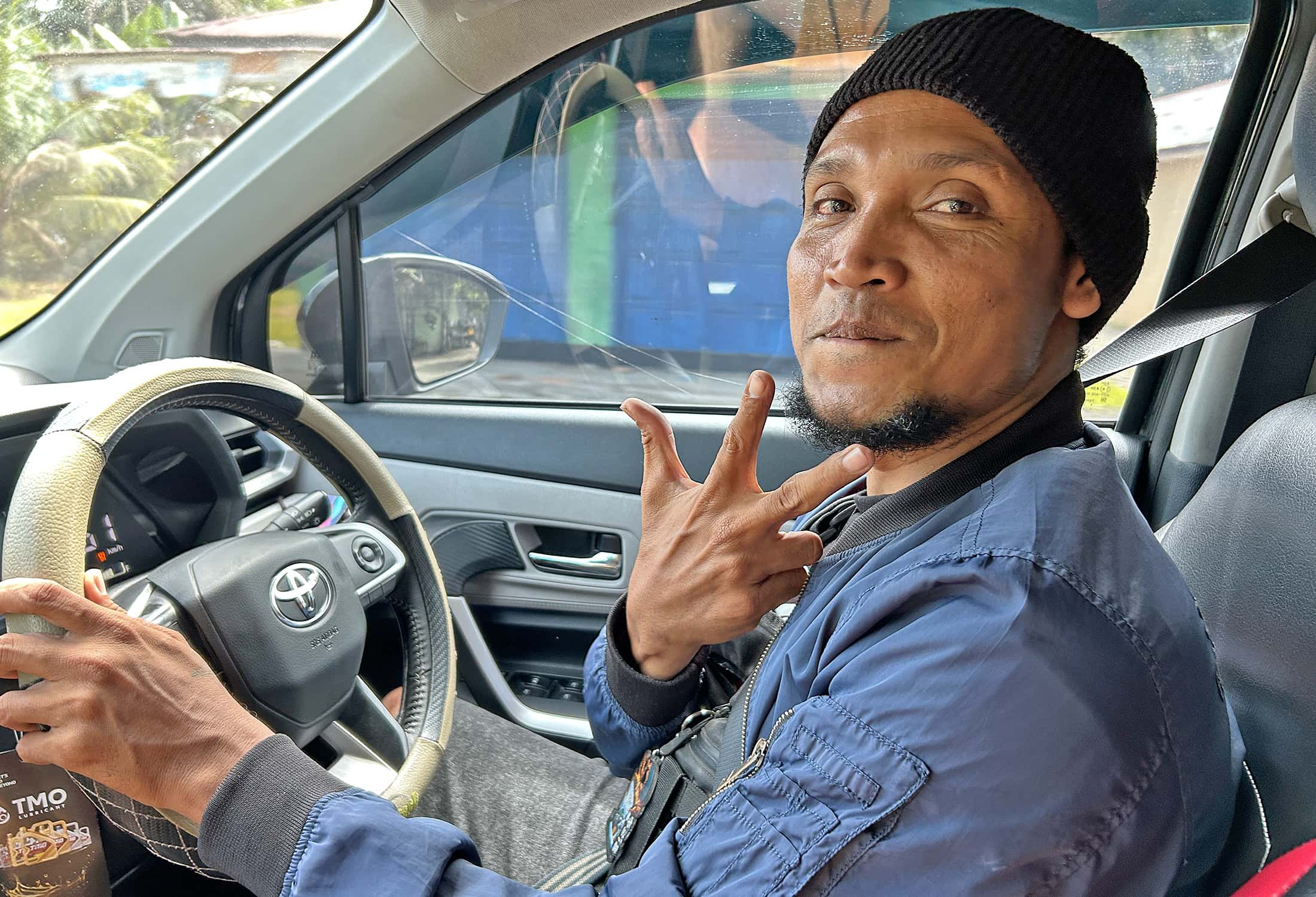
Taxi drivers, especially at airports and train stations, are masters of negotiation and gesture: “Three dollars, Mister!” The offer is cheeky, yet delivered with irresistible charm.
A taxi took Satyodaya, through Binjai, to the northern jungle village of Bukit Lawang. This village is the gateway to the Gunung Leuser National Park rainforest, where he had booked a three-day jungle trek. The starting point is on the Bohork River, which will play an important role later on. The roughly four-hour drive winds past street vendors and roadside eateries.
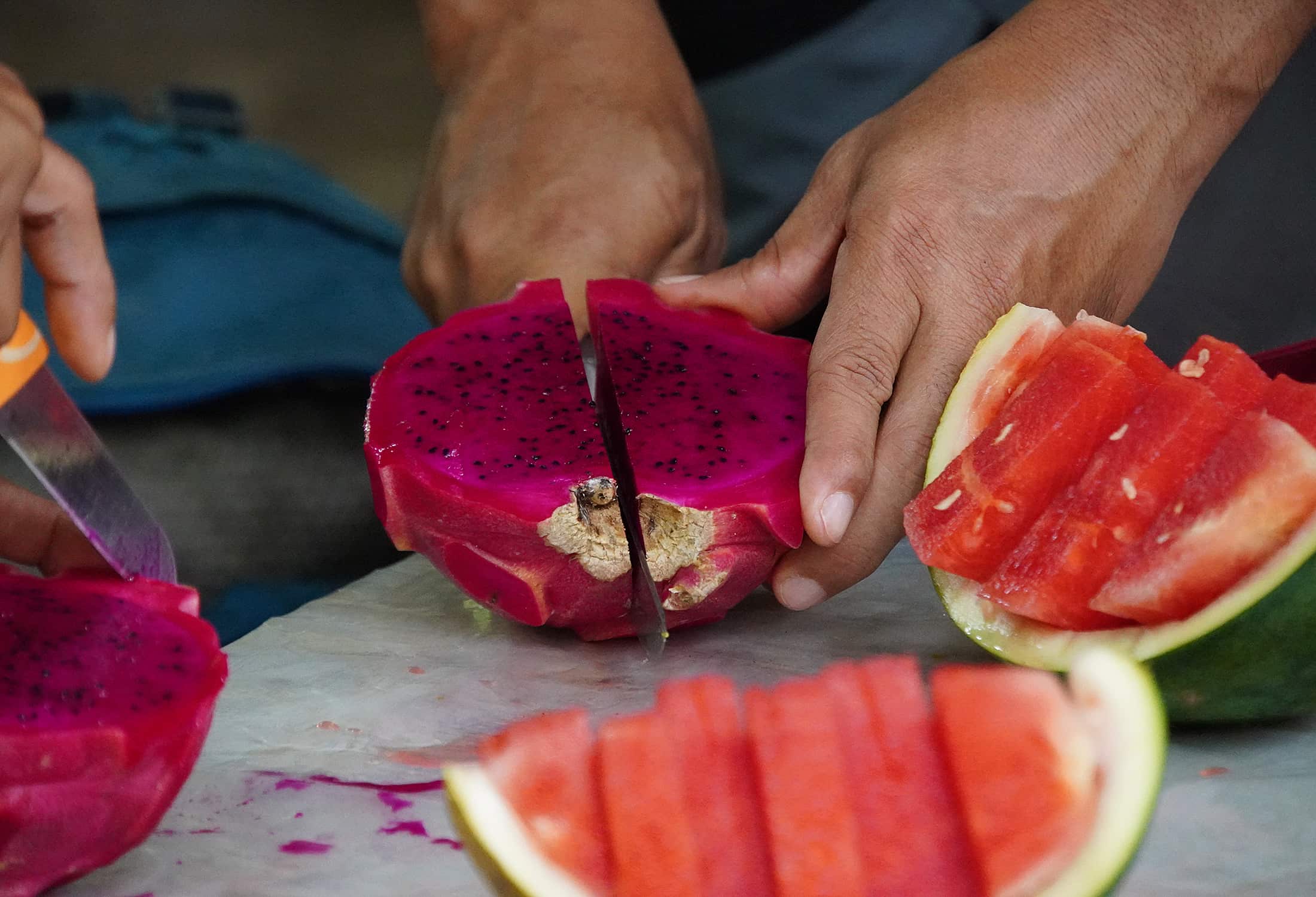
A refreshing fruit platter as a welcome – a tropical taste in the midst of (our) winter!

Fresh coconut milk, served with a friendly smile.
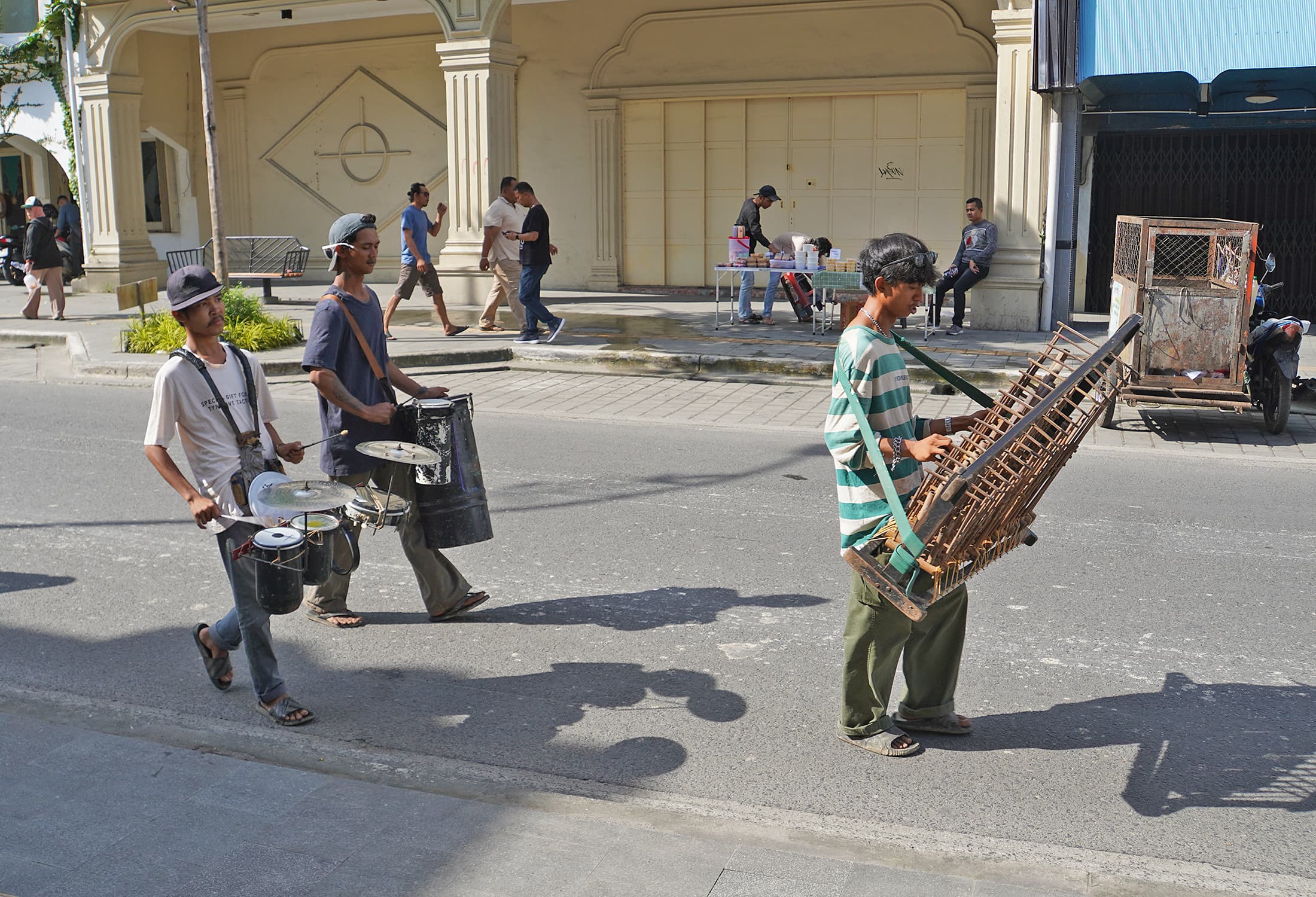
By chance, a local marching band makes an appearance.
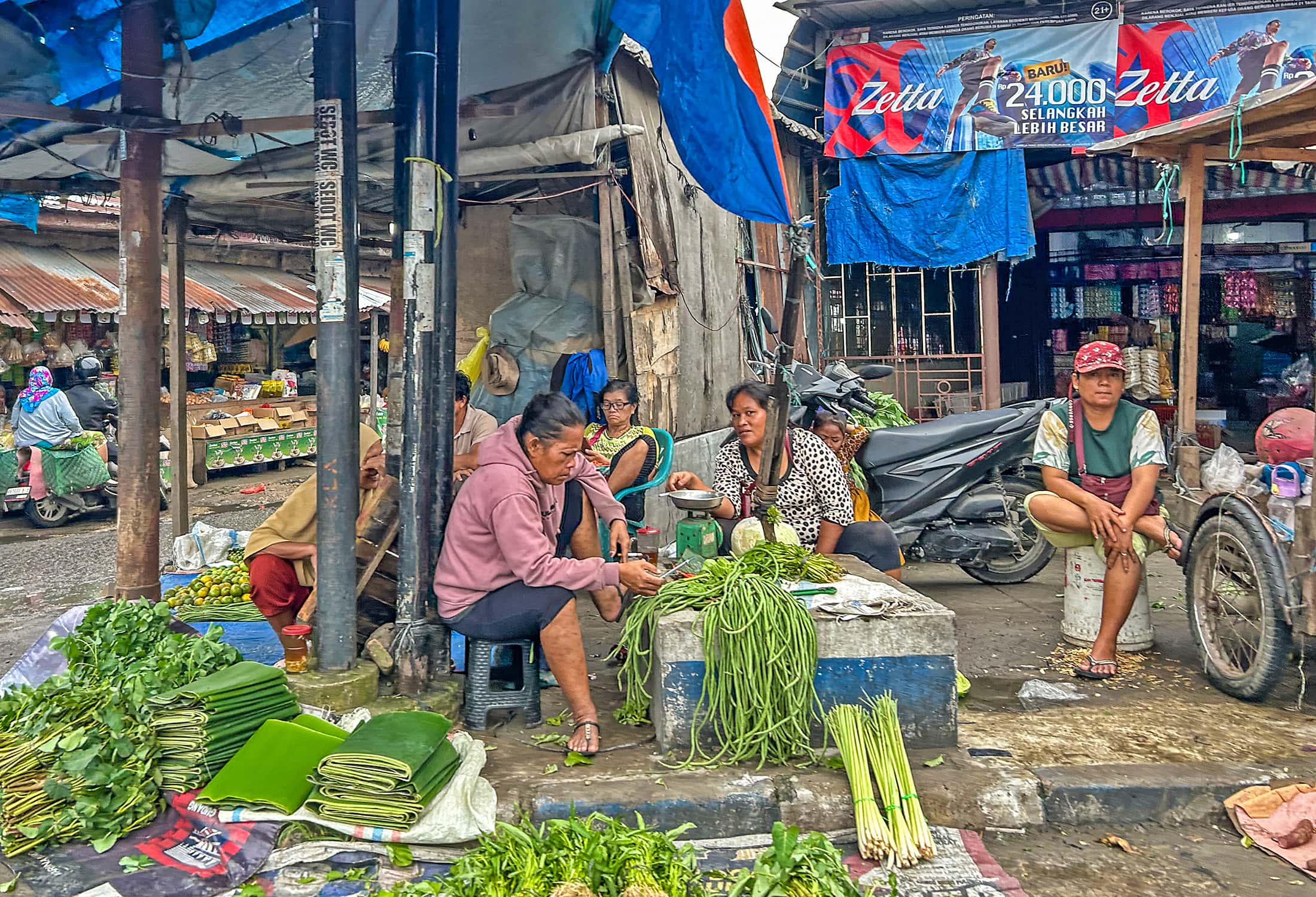
This shop is specialised in making plates from banana leaves, much like the thalis in India.
On the trek
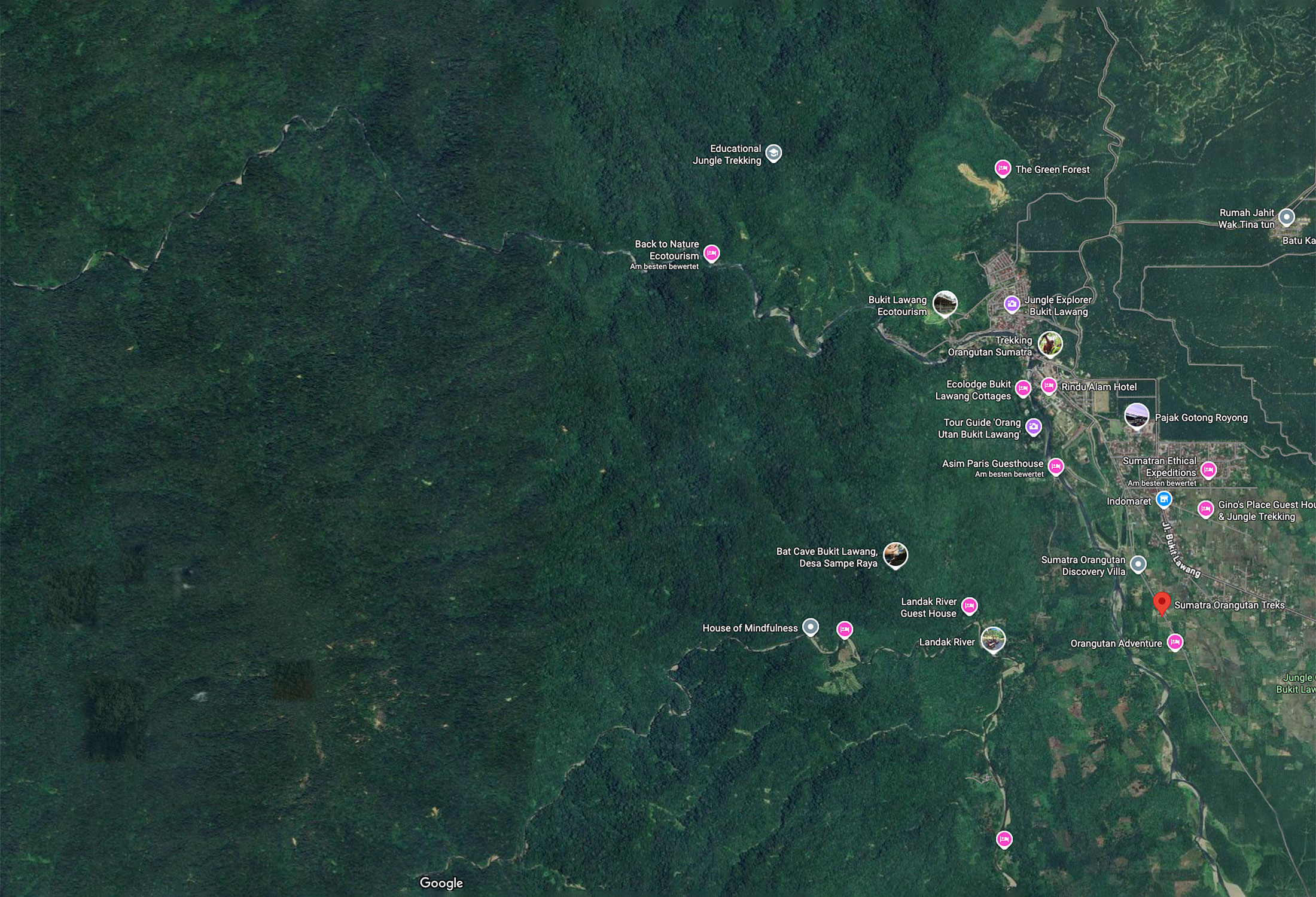
Bukit Lawang (Google Map)

The lodge in Bukit Lawang, the Sumatra Orangutan Treks Lodge, is the last comfortable, internet-connected accommodation before the jungle.
Satyodaya left his luggage behind and took with him only a small rucksack: towel, swimming trunks, a few T-shirts, a cloth sleeping bag, iPhone, and his Sony system camera, all well wrapped and waterproofed.
The trekking group consisted of three students plus Satyodaya, a guide, a rear guard, and a cook who would then meet the group at their overnight posts.
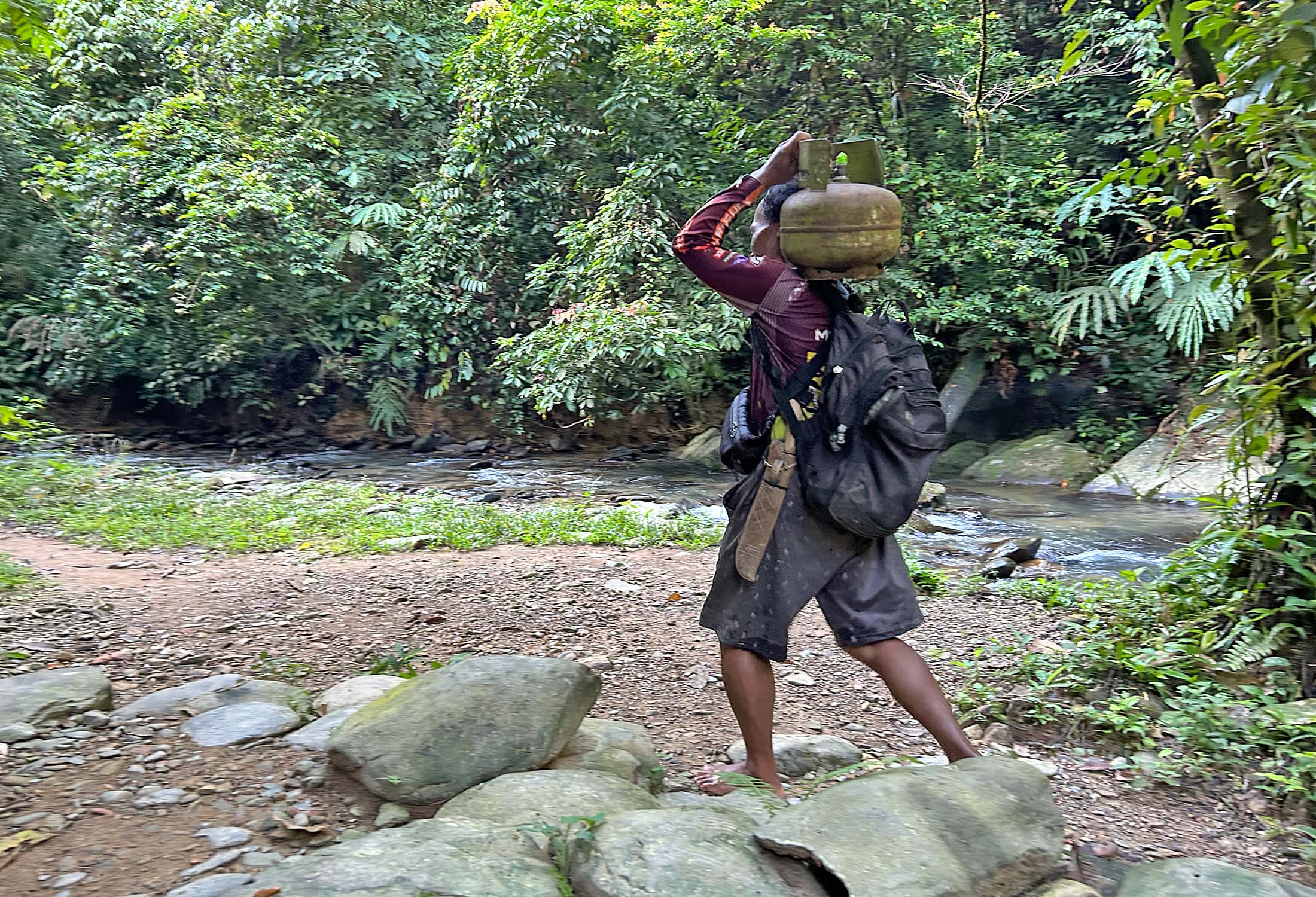
Porters carry provisions and essentials, like this gas stove for hot meals – the only luxury.
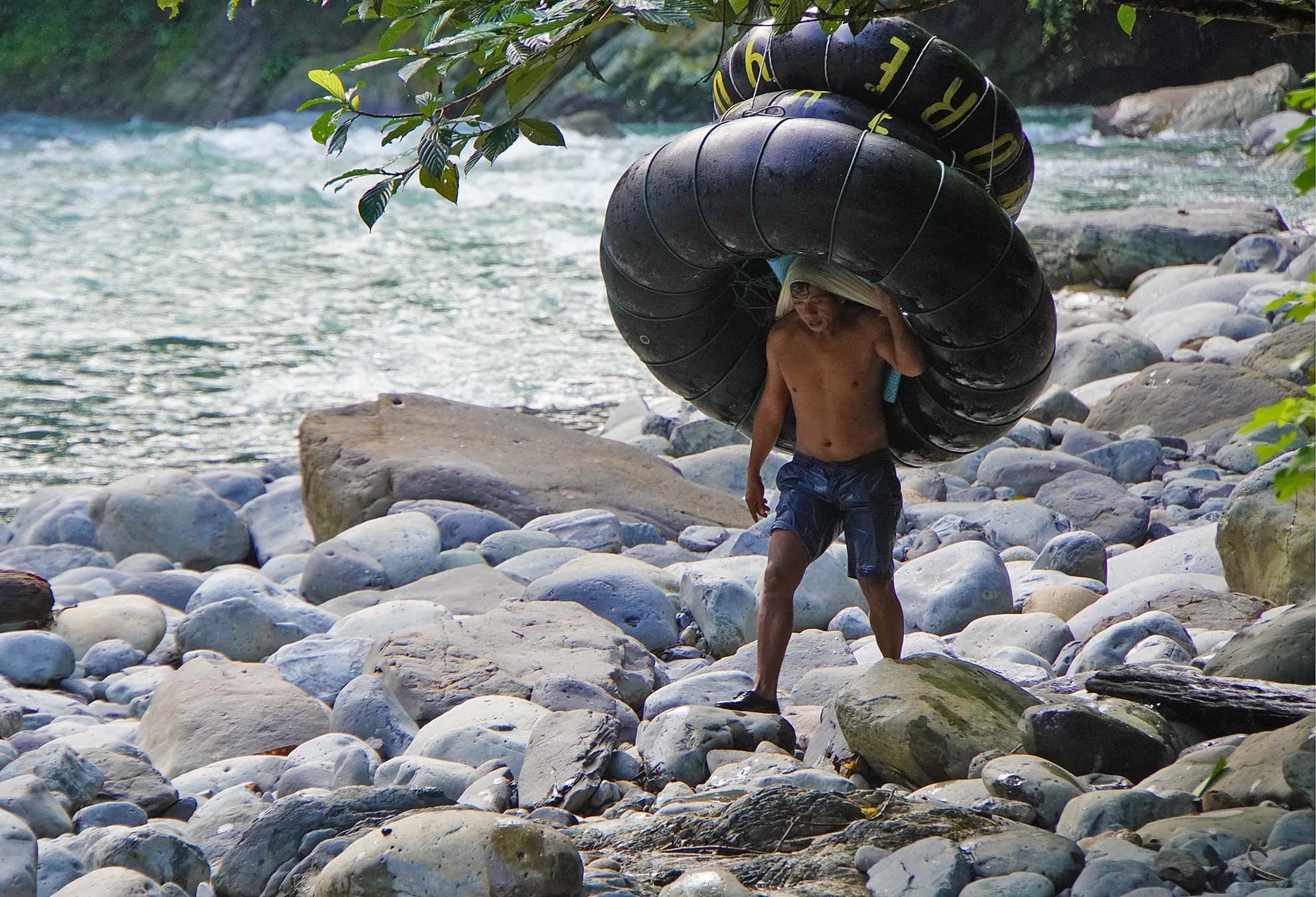
It’s hard to imagine that on their return the group would be coming downstream, on the white-water river Bohort, on these improvised rafts made from old inner tubes of lorry tyres…
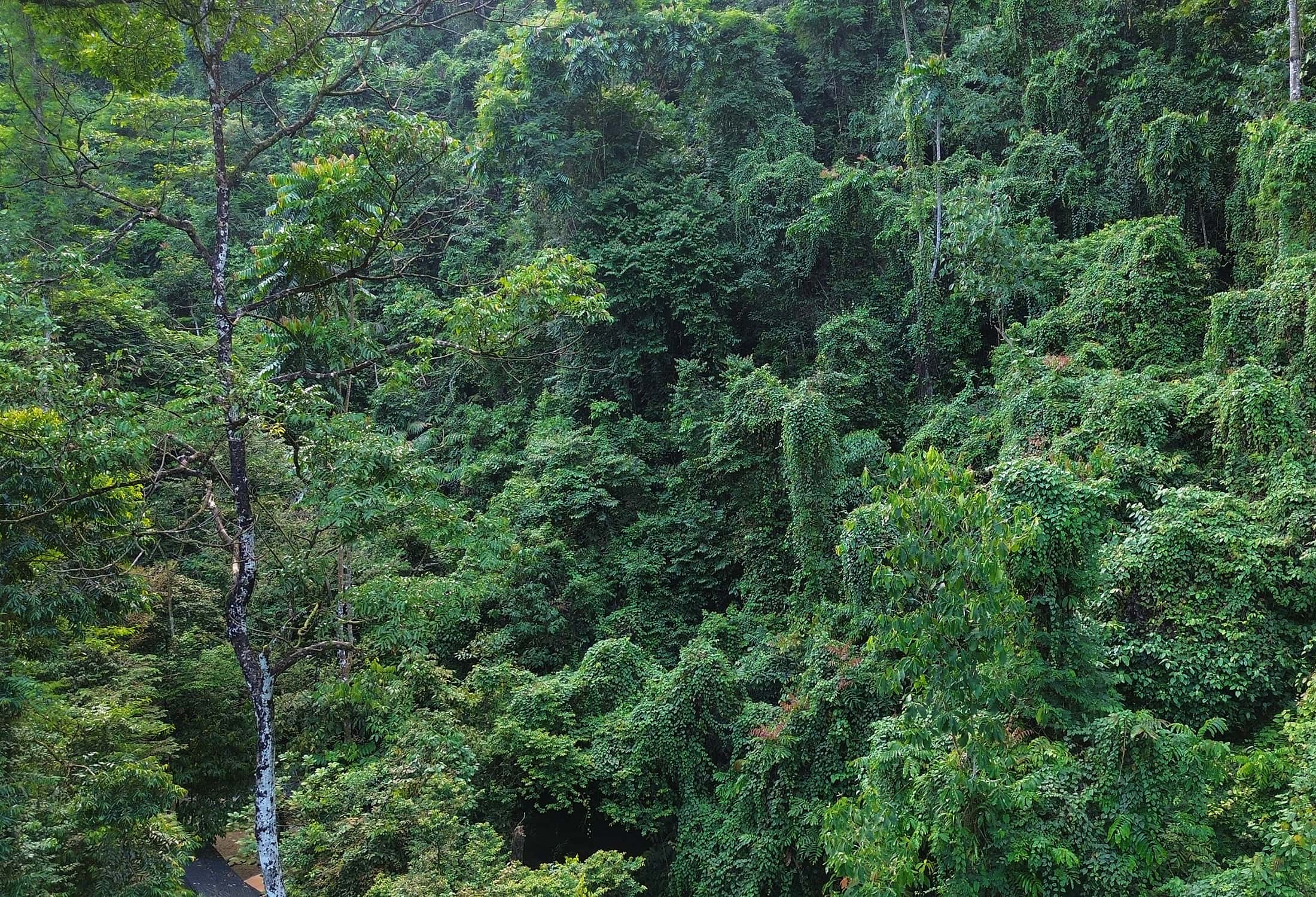
Sumatra’s remaining rainforests are vital for the global climate, as they store vast amounts of CO₂. Rainforests thrive when rainfall exceeds evaporation, creating this dense, lush ecosystem.
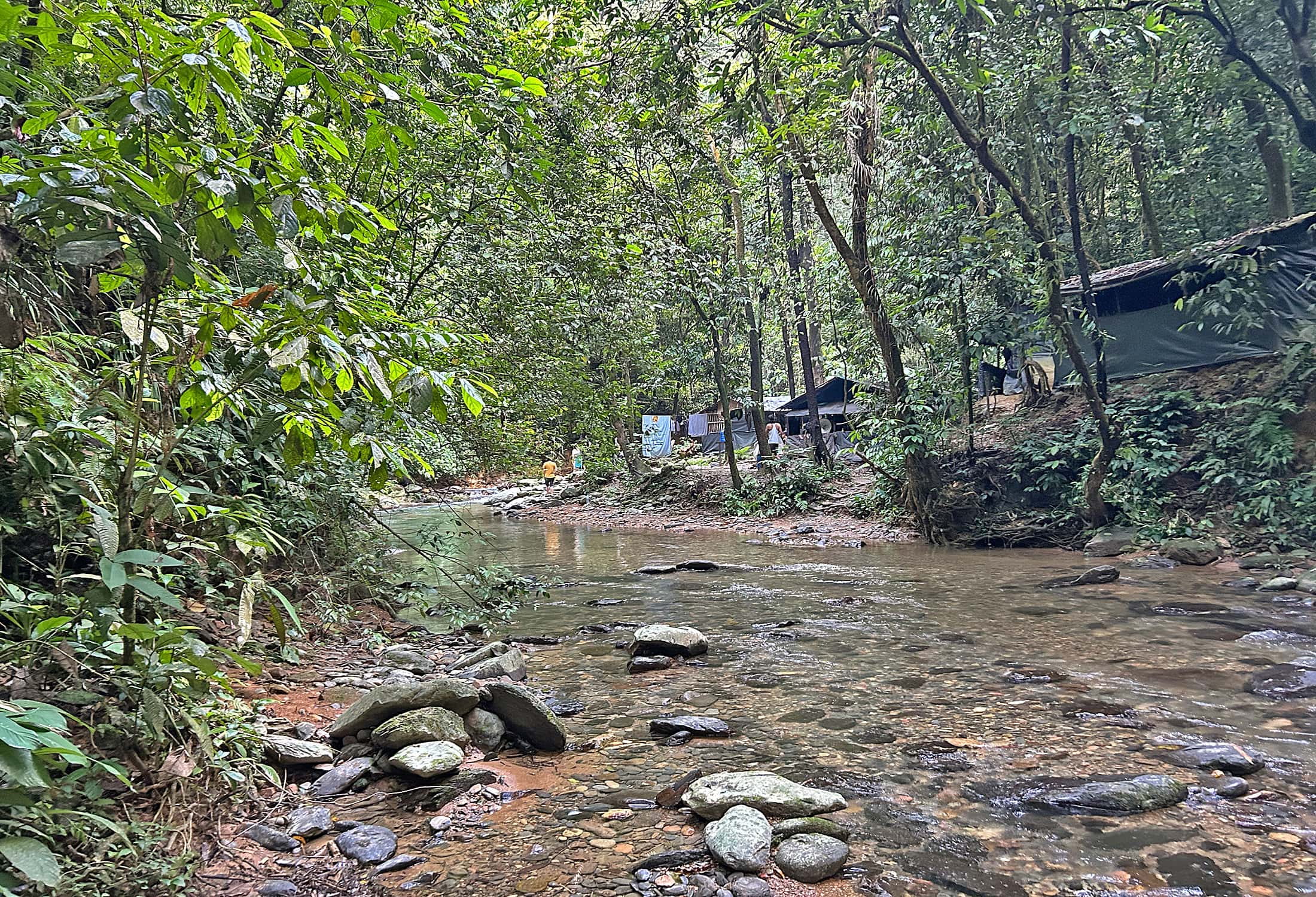
Even in the heart of the jungle, small communities can survive by living off the forest.
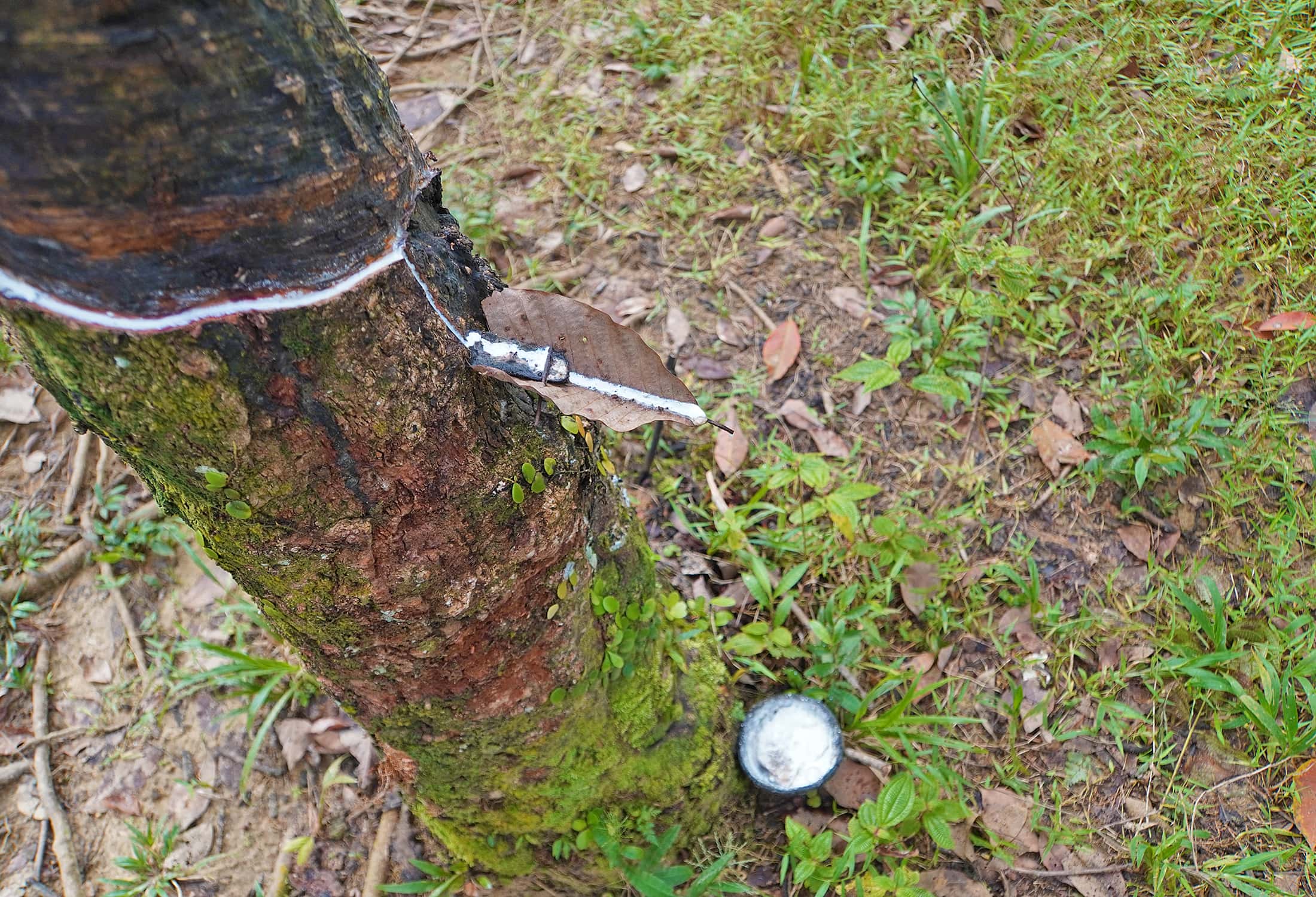
Tapping rubber trees provides a crucial source of income.
Unfortunately, much of Sumatra’s original rainforests have been replaced by enormous commercial rubber plantations to produce the raw material for e.g. our car tyres.
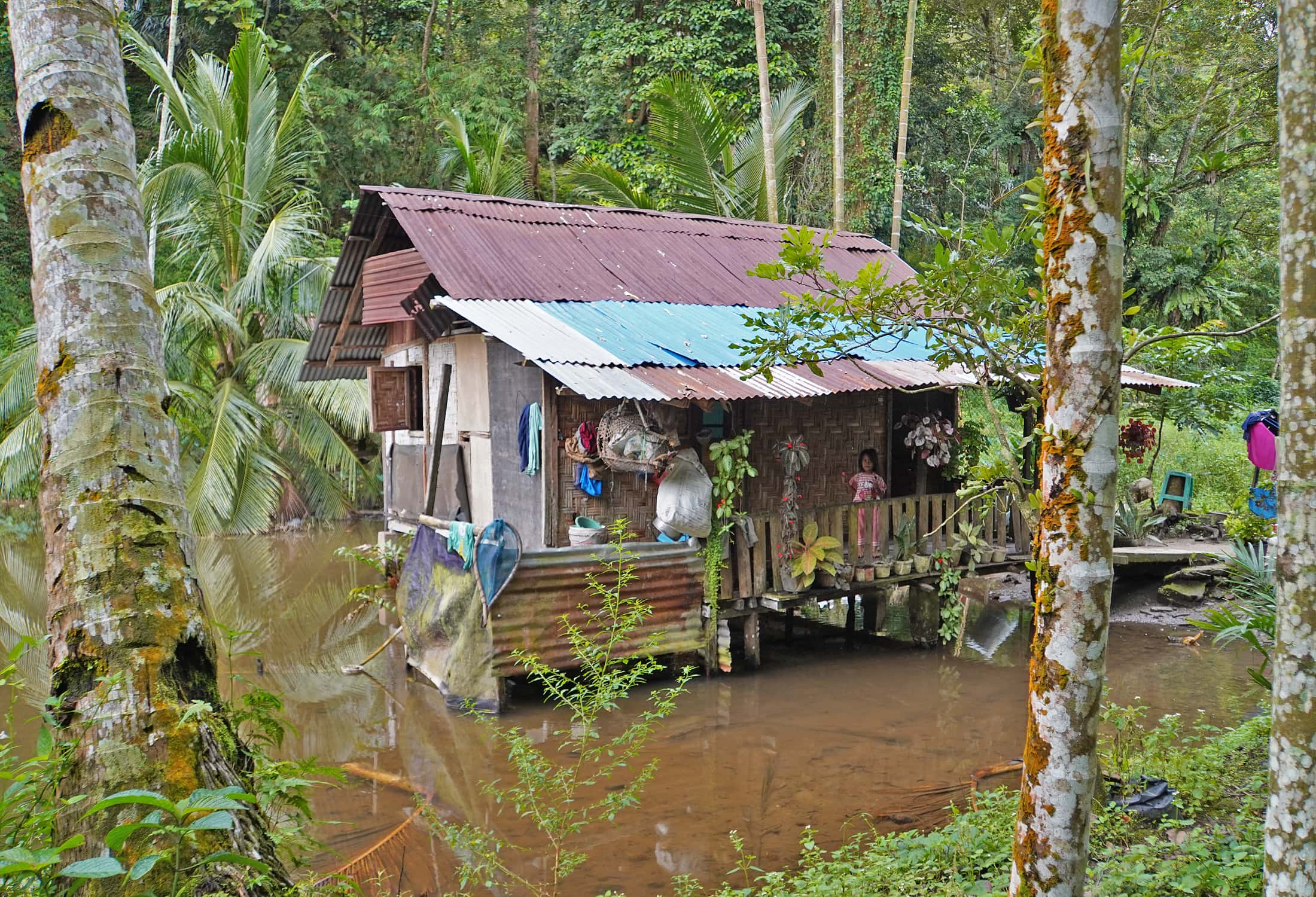
Along the numerous waterways the houses are often built on stilts, making them safe during flooding.
The trek entered the jungle immediately, initially passing through a rubber plantation. Bukit Lawang was the last village. Fortunately, the group did not need machetes to clear the path, though the journey remained exhausting because of the heat and the humidity.

Tiny waterfalls like this one offers welcome relief from the heat.
“Already after setting off early in the morning I was drenched in sweat!” recalls Satyodaya. Humidity hovered around 95% with temperatures above 30°C – and it was monsoon season!

This first-sighted monkey peers curiously at the photographer. It’s a Thomas Leaf Monkey, unique to Sumatra.
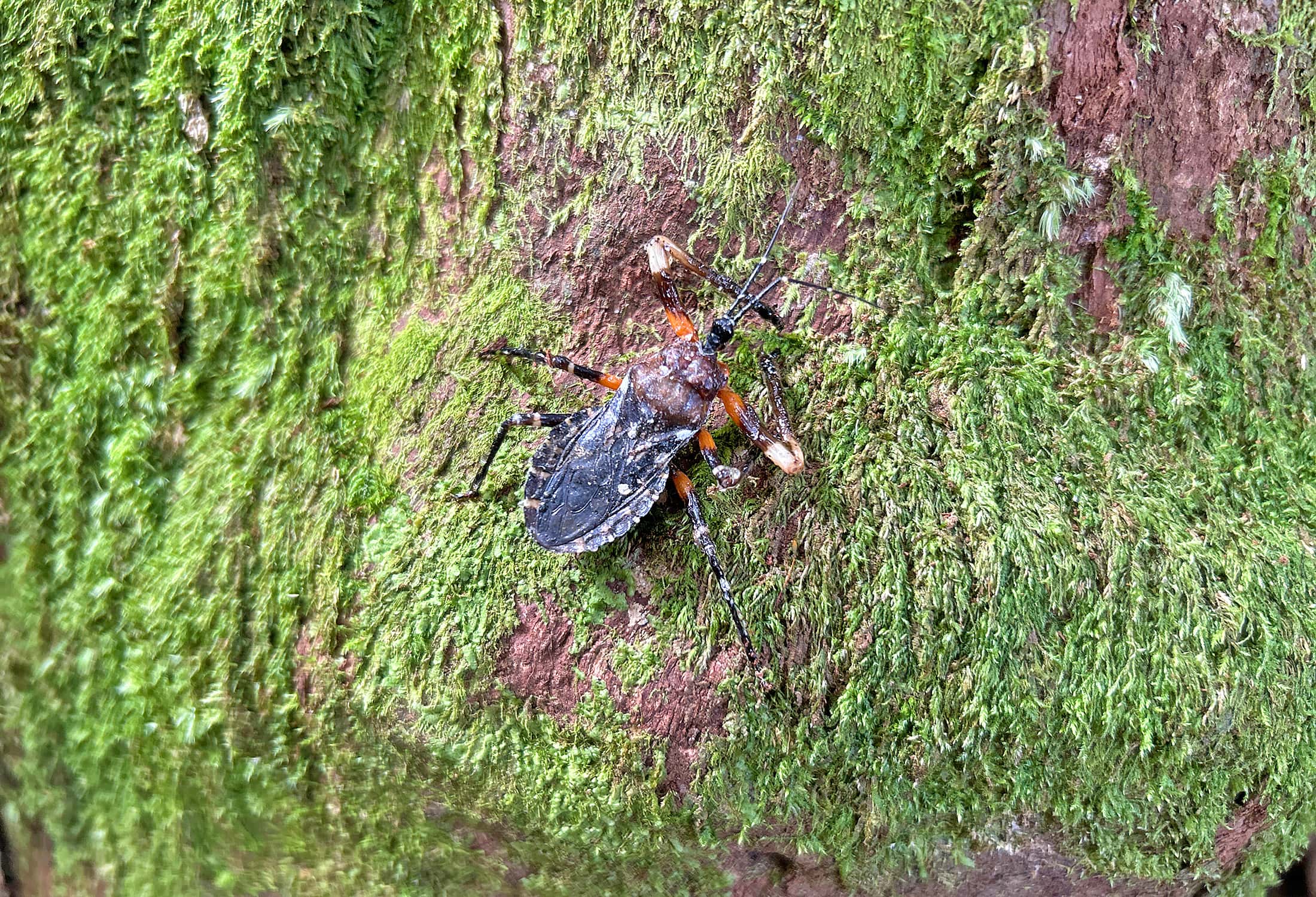
A rare giant beetle, perfectly adapted to this particular environment.

Plants in bloom can be seen only in sun-drenched clearings.
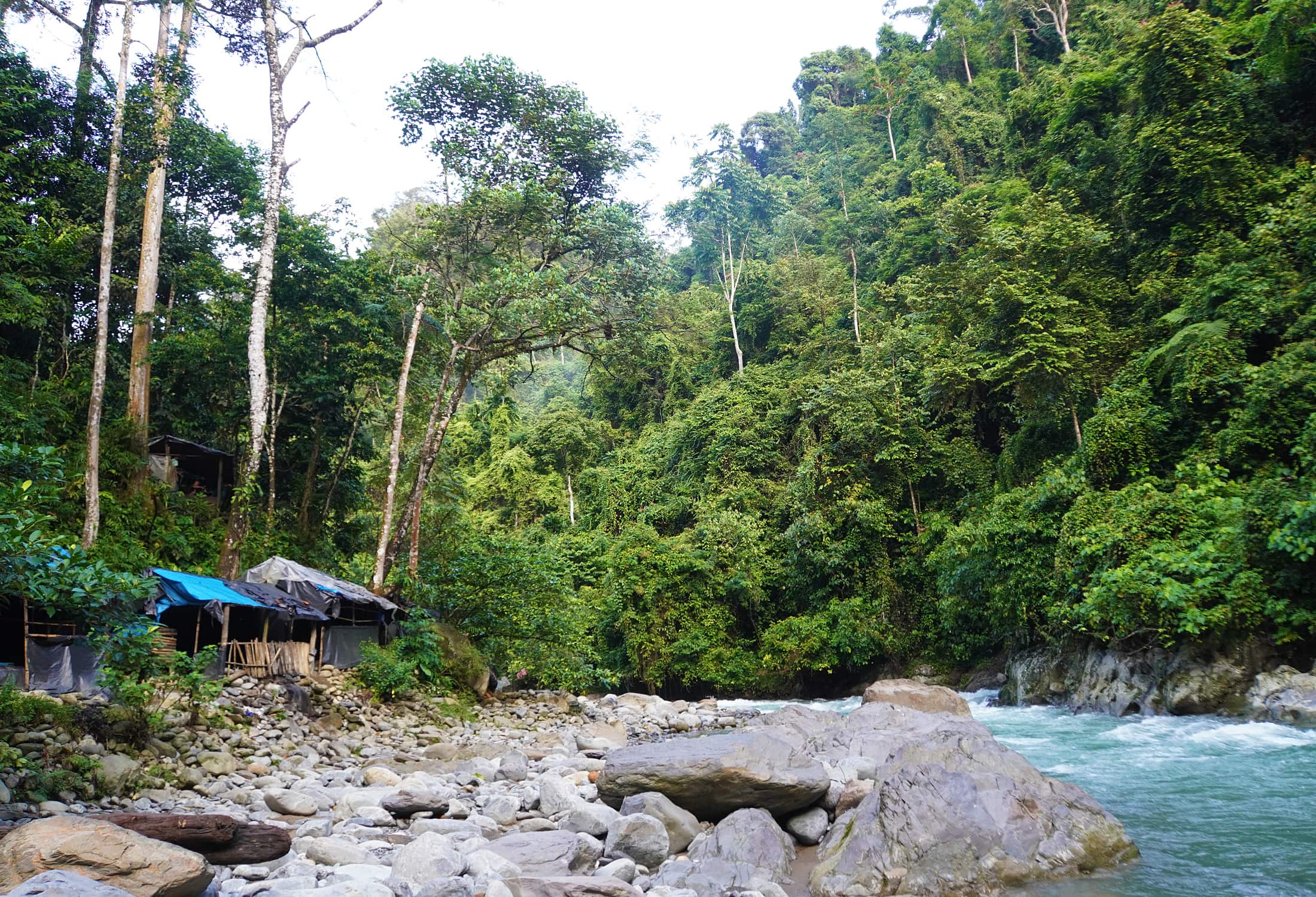
The first base-camp comes into view –made from bamboo poles, and with a roof of sorts.
The camp was modest but functional and it didn’t matter if it wasn’t at a deluxe hotel! But it turned out we had to sleep just on a thin mat on the ground covered by a tarpaulin.
“How was the trek?” I asked Satyodaya, an experienced mountaineer who can easily master 3000-metre-plus peaks in his homeland.
“By day, there were steep climbs and descents, slippery, muddy, and full of roots. The short stretches over the hilltops felt like a welcome break. High humidity all the time, soaked and muddy from top to toe, even without rain. A dip in a stream provided a moment of relaxation and an opportunity to give ourselves a wash.
“We trekked seven hours on the first day and five on the second. We camped by the river, our destination for the night. On the third day, we floated down the Bohork River in those inflatable tubes back to Bukit Lawang.”
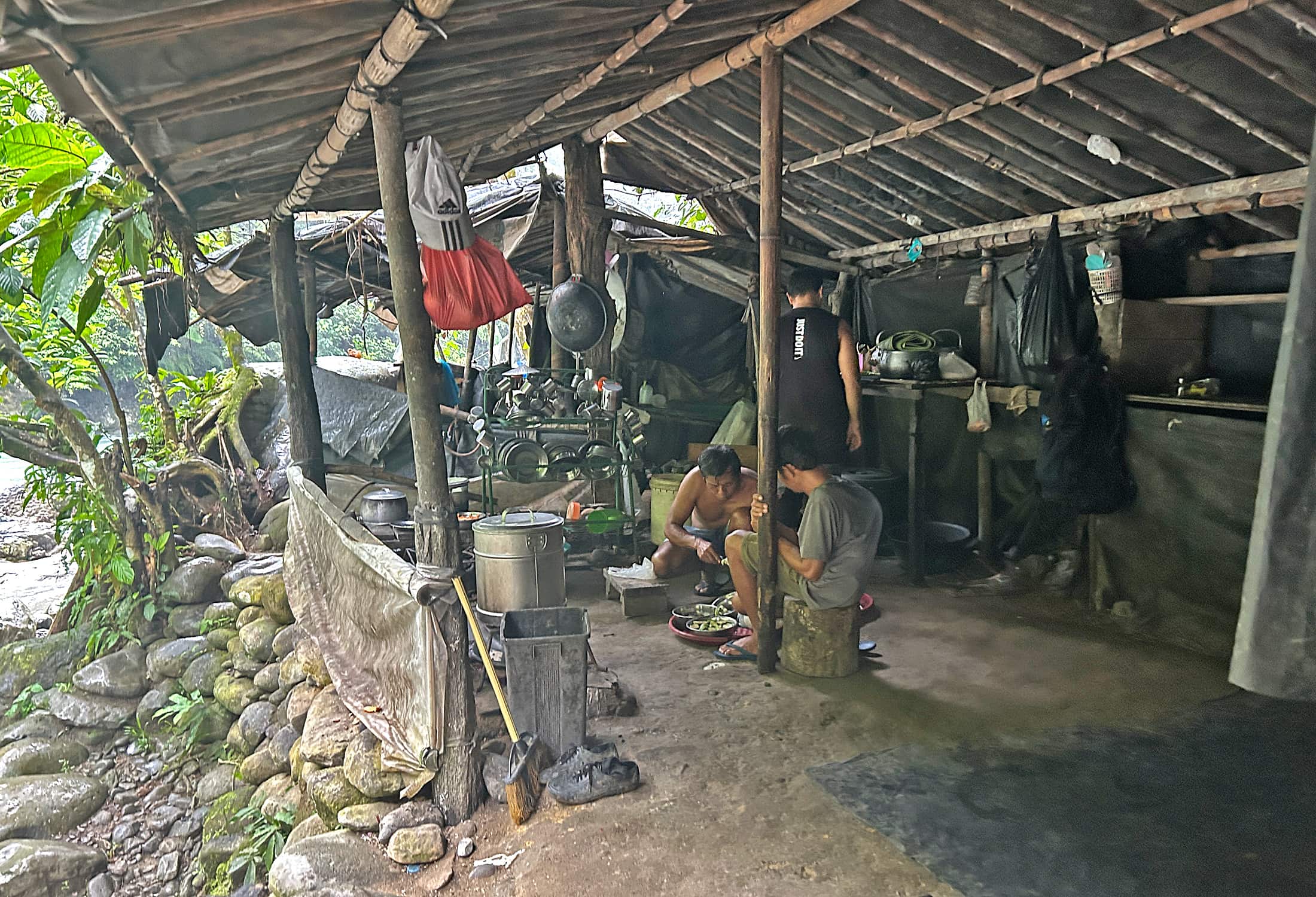
Everything in the jungle lodge is a bit improvised but, despite the circumstances, a real gift.
We had great meals and a good rest. On that first evening, the cook spoiled us with a varied buffet made with the most simple ingredients, and tools. Right besides were our ‘beds’.
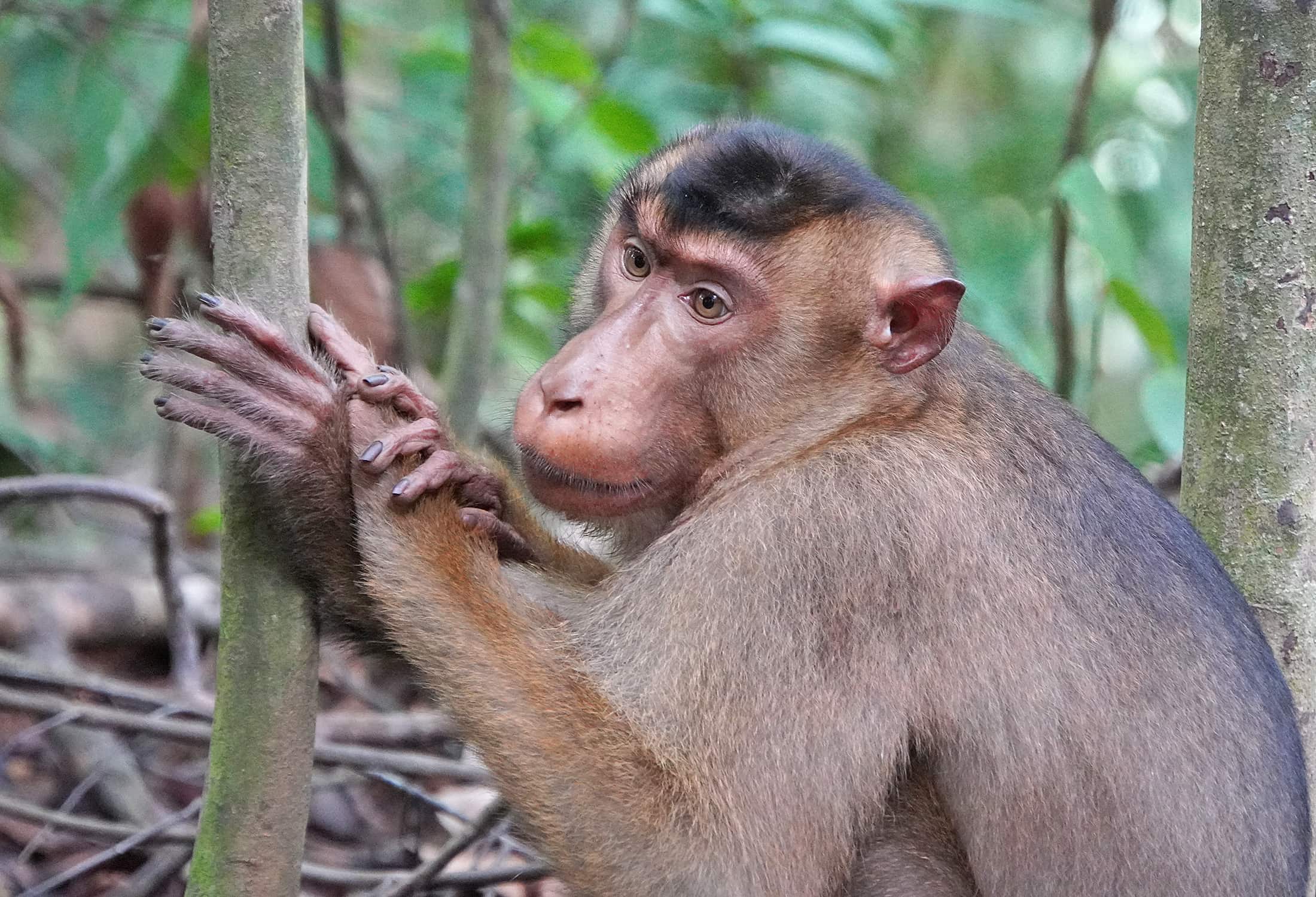
This macaque monkey lives in a state of relaxed alertness that a person practising mindfulness – such as the writer of these lines – can only bow down to.
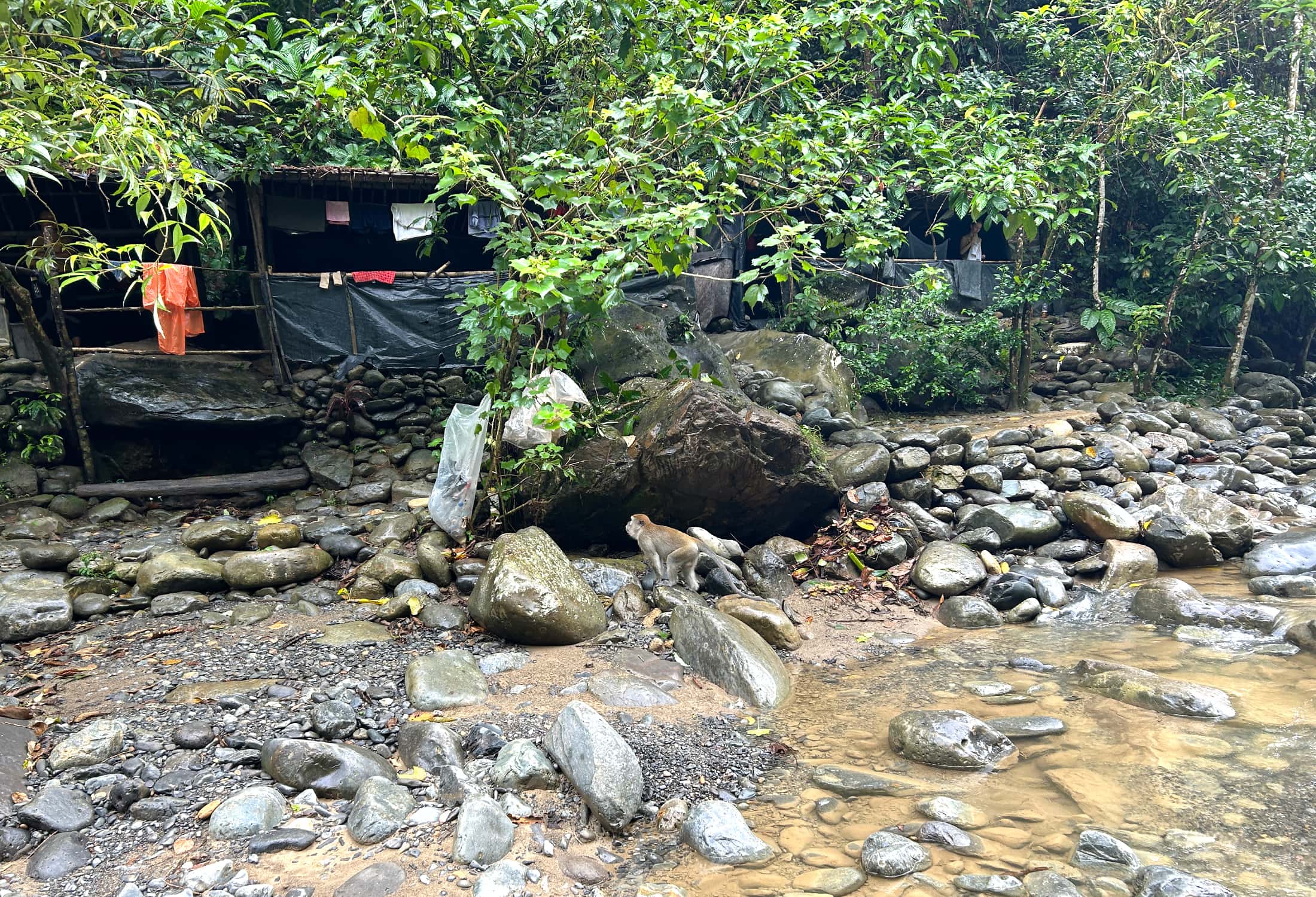
It’s probably the smell of dinner that is attracting this macaque to the camp. There must be something edible in the plastic bag hanging from that tree! These clever and skilful animals can be seen all over.
“Once the monkeys even stole our biscuits during afternoon tea when we weren’t paying attention!”
“How was your first night in the jungle?” I asked.
“Exhausted! I slept immediately on that thin mat, but only on my back. You couldn’t turn on your side unless you had some extra padding… I don’t even know if anyone kept watch. Whereas on the second night, all we could hear was the rain pelting down.”
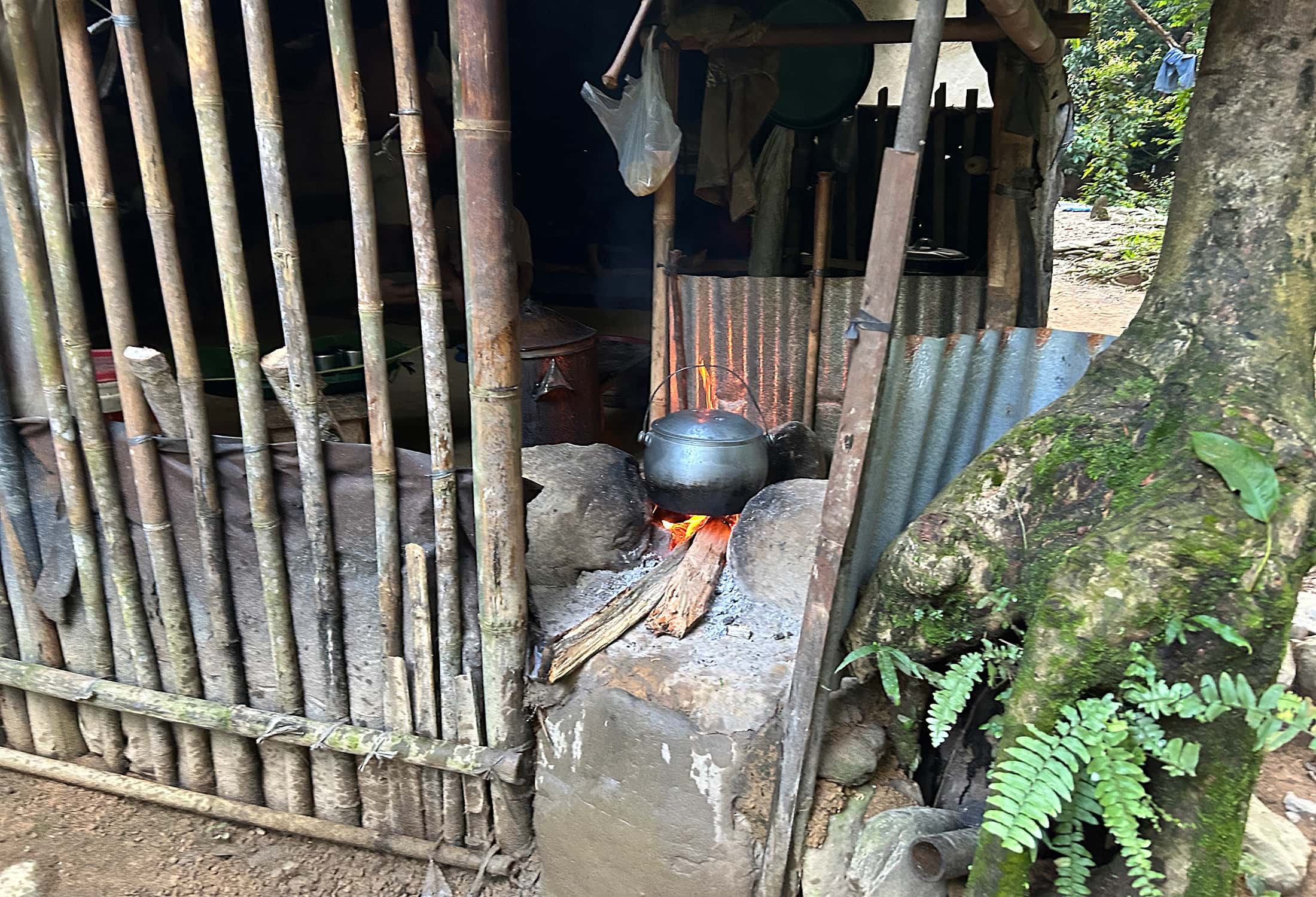
After morning tea and a few biscuits, the group sets off for their second day of trekking.
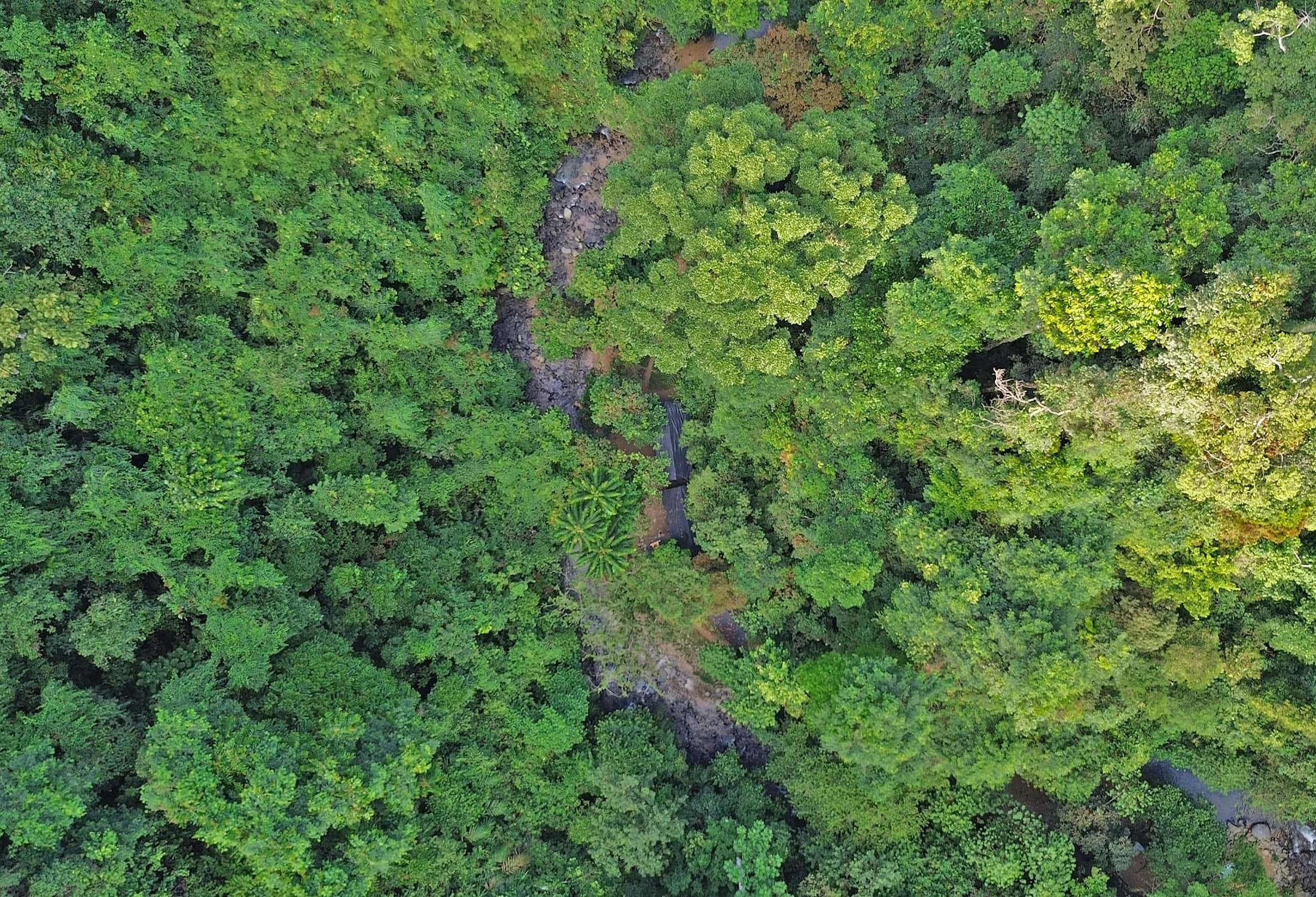
Drone shot of the river winding its way beneath the dense canopy of trees. The route runs along the slopes and valleys to the side of it, sometimes crossing one of the many streams.
To be continued in Part 2…
Related articles on Osho News
- Atisha’s spiritual journeys – India to Tibet via Sumatra – Atisha’s extensive travels to meet his guru, told by Akanksha Damini Joshi. Published in eSamskriti (March 2021)
- Train impartially in every area… – Osho comments on a sutra by Atisha
Related links
- Muaro Jambi: en.wikipedia.org
- Gunung Leuser National Park: wikipedia.org






Comments are closed.